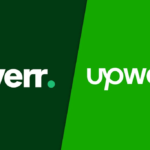The Rise of Online Education and How Anyone Can Earn from Teaching Online
Dagi, here is her message:
Online education has transformed the way we learn and teach, breaking down barriers of geography, time, and traditional classroom constraints. What began as a niche alternative has evolved into a global phenomenon, accelerated by technological advancements and a growing demand for flexible, accessible learning. Today, it’s not just students who benefit—anyone with knowledge to share can turn their expertise into a profitable venture through online teaching. Whether you’re a seasoned educator, a hobbyist, or a professional in a specific field, the digital landscape offers unprecedented opportunities to create content and earn a living from it. Let’s explore the rise of online education, how you can monetize your skills, and the top platforms to get started.
The Evolution of Online Education
The roots of online education stretch back to the early days of the internet, but it was the launch of platforms like Coursera and Udemy in the early 2010s that marked a turning point. These platforms brought university-level courses and practical skills to the masses, proving that learning could thrive outside physical classrooms. The COVID-19 pandemic further cemented this shift, pushing schools, universities, and individuals online almost overnight. By 2025, the e-learning market is projected to soar past $400 billion, driven by a hunger for upskilling, reskilling, and lifelong learning. What makes online education so appealing? It’s the flexibility—learners can study at their own pace, and teachers can reach audiences worldwide without leaving home. This democratization of education has opened doors for anyone with valuable insights to become a creator and educator.
Turning Your Knowledge into Income
You don’t need a teaching degree or a fancy studio to start earning from online education. The beauty of this model lies in its accessibility—your content is your currency. Here’s how anyone can get started and profit from teaching online:
1. Identify Your ExpertiseEveryone has something to offer. Are you a whiz at coding? A master gardener? A language enthusiast? Start by pinpointing what you know well and what people might want to learn. The more specific, the better—niche topics like “container gardening for small spaces” or “Python for data visualization” often attract dedicated learners willing to pay.
2. Create Engaging ContentYour content doesn’t need to be Hollywood-level, but it should be clear, useful, and engaging. Record video lessons with a smartphone or webcam, pair them with slides or worksheets, and focus on solving real problems for your audience. For example, a baker could teach “5 Foolproof Sourdough Techniques” with step-by-step videos, while a marketer might offer “SEO Hacks for Beginners” with practical examples. Authenticity and value trump polish every time.
3. Choose Your Monetization PathThere are several ways to earn from your content:
• Direct Sales: Sell courses or tutorials on platforms that let you set your price.
• Subscriptions: Offer ongoing access to your lessons via a membership model.
• Ad Revenue: Upload free content to platforms like YouTube and earn from ads.
• Affiliate Marketing: Recommend tools or products in your lessons and earn commissions.
• Live Classes: Host webinars or one-on-one sessions for a premium fee.Mix and match these based on your goals—some creators start with free content to build an audience, then upsell paid courses.
4. Build an AudienceYou don’t need a massive following to start. Share your content on social media, join relevant online communities, or collaborate with others in your field. Consistency is key—post regularly, engage with learners, and let word-of-mouth grow your reach. A small, loyal audience can be more profitable than a large, disengaged one.
5. Scale Your EffortsOnce you’ve tested the waters, expand. Turn a single lesson into a full course, offer downloadable resources, or create a series. The initial effort of creating content pays off as it can be sold repeatedly with no extra work—think of it as planting a seed that keeps bearing fruit.
The earning potential varies widely. A beginner might make $100–$500 a month selling a course, while experienced creators with a strong niche can pull in thousands. For instance, a photography instructor charging $50 for a course with 100 students earns $5,000—and that’s just one offering. The key is starting small, refining your approach, and scaling with demand.
Top Platforms to Teach and Earn
Ready to dive in? Here are some of the most popular and reliable platforms where you can share your content and start earning. Each has unique strengths, so pick one (or more) that aligns with your style:
1. Udemy
• Why It’s Great: Udemy is a giant in online learning, with millions of students seeking courses on everything from coding to cooking. You create a course once, upload it, and earn whenever someone buys it.
• How to Earn: Set your price (or let Udemy discount it), and keep 50–97% of the revenue depending on how students find you.
• Best For: Beginners who want a built-in audience and don’t mind sharing revenue.
2. Teachable
• Why It’s Great: Teachable lets you build your own branded course site, giving you full control over pricing and content. It’s user-friendly and supports videos, quizzes, and downloads.
• How to Earn: Charge what you want—say, $29 for a course—and keep most of it after a small transaction fee (free plan) or monthly subscription ($39+).
• Best For: Creators who want independence and a professional setup.
3. Skillshare
• Why It’s Great: Skillshare focuses on creative skills like design, writing, and photography. It’s subscription-based, so students pay monthly for access to all courses.
• How to Earn: Earn royalties based on minutes watched, plus bonuses for referrals. Top teachers make $1,000+ monthly.
• Best For: Creative types who enjoy short, project-based lessons.
4. Preply
• Why It’s Great: Perfect for one-on-one teaching, Preply connects tutors with students globally, especially for languages but also other subjects.
• How to Earn: Set your hourly rate (e.g., $15–$30), and keep 67–82% after commission, which decreases as you teach more.
• Best For: Those who prefer live, personalized teaching.
5. YouTube
• Why It’s Great: It’s free to start, and you can reach a massive audience. Pair educational videos with ads or funnel viewers to paid offerings.
• How to Earn: Monetize with ads (after 1,000 subscribers and 4,000 watch hours) or promote your own courses. Earnings vary—$1–$5 per 1,000 views is typical.
• Best For: Content creators comfortable with video and building a following.
Final Thoughts
Online education isn’t just a trend—it’s a revolution that empowers anyone to teach and earn from their knowledge. Whether you’re sharing a lifelong passion or a hard-earned skill, the tools and platforms are at your fingertips. Start by crafting content that reflects your unique perspective, experiment with monetization, and tap into platforms like Udemy, Teachable, Skillshare, Preply, or YouTube. The journey might begin with a single lesson, but with persistence, it can grow into a sustainable income stream. In a world hungry for learning, your voice has value—why not share it and profit along the way?




Comments
Loading…